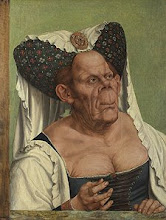To celebrate the Chinese New Year, the National Art Museum of China is currently hosting a large-scale exhibition of paintings containing the New Year theme. The exhibition, which displays 300 Chinese New Year Paintings and has already drawn in thousands of visitors, has brought about a surge of interest in Chinese folk art among art lovers. On display are paintings ranging in creation dates from the beginning of the Qing Dynasty (during the mid 17th – century) to those created over the past few decades. The extensive display offers a panoramic view of the development of Chinese folk art, an obscure form of art that is slowly regaining its popularity.
In general, folk art is meant to decorate but also portray themes and subjects of a specific peoples’ culture or history. The Chinese folk art paintings at the National Art Museum of China express fortune and joy (themes associated with the Chinese New Year), with concise lines, bright colors and happy atmospheres. The exhibition includes almost all of the nation’s most famous New Year paintings (such as Yangliuqing of Tianjin, Taohuawu of Suzhou in Jiangsu, Yangjiabu of Weifang in Shandong and Wuqian).
Han Pu, a researcher at the Beijing Research Institute of Culture and History recently discussed the significance of the exhibition,
"It is a very rare chance to see so many pieces of precious New Year paintings together," commented Han Pu, a researcher at the Beijing Research Institute of Culture and History. Such an exhibition does not only add atmosphere for the New Year, but also helps people know more about the declining folk art … Such an exhibition would undoubtedly boost the audiences' understanding about this traditional art genre and is an effective way to help revive the folk art.”
New Year paintings are considered a special art form in Chinese folk culture, and the accompanying custom of hanging or pasting the paintings onto walls and doors during the Spring Festival for decoration and to greet the New Year, dates back to the Tang Dynasty (618 – 907 CE). While this custom is no longer popular in China, the exhibition seeks to ignite a desire to learn more about Chinese folk art and grow closer to Chinese history and tradition.



 However, it appears that Hopkins does have a keen eye and artistic aptitude for painting. A recent article in
However, it appears that Hopkins does have a keen eye and artistic aptitude for painting. A recent article in  Click
Click 